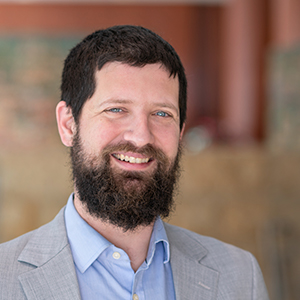
In fields ranging from early childhood development to affordable housing, practitioners are attempting to make their work more “trauma-informed.” The phrase derives from a growing, multidisciplinary body of research on the long-lasting impacts of childhood trauma. A closer look at trauma-informed work—and organizations’ decisions to embrace it—presents an opportunity to explore the common ground between researchers’ findings and the day-to-day practices of safety-net social service providers.
A shift in focus
The Greater Minneapolis Crisis Nursery provides a continuum of care for families who are experiencing crisis and in need of support. In addition to emergency, short-term, overnight care for children ages zero to six years, the Crisis Nursery offers a 24-hour crisis line, clinical home visiting, and in-home adult mental health services. Families access the overnight child care for a variety of reasons, including homelessness, the need to flee abuse, or the occurrence of a serious physical or mental health crisis.
More than 16 years ago, Molly Kenney began her work at the Crisis Nursery in the organization’s home visiting program, which provided families with follow-up services intended to support their long-term well-being.
The work was challenging at times, Kenney said. The program was designed to work with families for six weeks—a duration that barely provided enough time to gain families’ trust, let alone create a plan with them for working toward their goals. The program’s time frame and orientation toward clients were based on standard practices in the field, but Kenney often felt like its structure limited the program’s effectiveness.
—Molly Kenney, Greater Minneapolis Crisis Nursery
She attended conferences and learned about new developments in neurobiology that often focused on children. When she heard about new research into the effects that stressful environments can have on kids, her thoughts turned to the adults who were frequently excluded from the conversation.
“I’d attend conferences or workshops and think, ‘The parents I’m working with were once the children we’re talking about here,’” she said. “When children experience trauma, it impacts the way they parent when they grow up. We needed to think more about how to support parents.”
The new body of research that spoke directly to Kenney’s experiences with her adult clients had started with a doctor’s observations about the results he was seeing with weight-loss patients. It would go on to inspire a movement among some social service providers.
The proverbial light bulb switches on
Dr. Vincent Felitti’s obesity clinic in San Diego, which was part of the Kaiser Permanente integrated health system, did a good job helping its patients lose weight. But Felitti noticed that his clinic was also fairly good at losing patients. About half would leave the program, even if they were finding success with his methods.
Through his experiences with patients, Felitti learned that many of the program’s dropouts had suffered abuse, neglect, or other traumatic experiences as a child. He would go on to leverage Kaiser Permanente’s access to its clients and their data, working with a team of researchers to study how trauma experienced during childhood affects a client’s adulthood. The research identified ten categories of harmful events that put patients at a much greater risk for heart disease, depression, and other poor health outcomes later in life.
The study coined a phrase for the ten event categories: adverse childhood experiences, or ACES. Findings showed that the more ACES children experienced, the more likely they would be to have poor health outcomes in adulthood.1
Later studies have supported the connection between ACES and adult health. For example, in 2011, researchers at the Minnesota Department of Health completed a survey on ACEs in the state and found results very similar to those of the Kaiser Permanente study.2
Further research has linked childhood trauma to brain development. Children who have experienced certain forms of abuse, for example, may react more intensely to stressful situations, struggle with emotional self-regulation, and misinterpret facial expressions as angry when compared to children who have not experienced abuse.
On the whole, research on ACEs strongly suggests that early-life trauma and later-life health outcomes are not merely correlated; rather, early-life trauma plays an important role in poor health and other outcomes later in life.
Connecting research to practice
Leadership and staff members at many social service organizations have followed the growing body of evidence linking their adult clients’ ACES to their health and behavior. The principles and practices providers implement to reflect that research are often called trauma-informed or trauma-responsive, and can touch every aspect of an organization’s work.
As the Crisis Nursery has reformed its practices to become more trauma-informed, some of the changes have been subtle, such as revising the responses staff members provide to individuals who call the crisis line, in a way that uses multiple perspectives to try to understand the individuals’ behaviors. Others represent substantial changes in program design. For example, the nursery doubled the timeline of home visitors’ work with a family from 6 to 12 weeks, then increased it to 18 months. Currently, the Crisis Nursery’s home visiting program works with families for up to two years.
—Molly Kenney, Greater Minneapolis Crisis Nursery
“Experiences shift the way people view the world and respond to it,” Kenney said. “If we want to be effective, we can’t just try to override that. We have to be responsive to it.” She notes that since trauma can elevate a person’s sense of risk, social service providers can’t assume that their clients will view them as trustworthy, even if the providers’ intentions are good.
“We’ve re-oriented ourselves as partners for people who are struggling to navigate really tough challenges. It’s important that people know we value the strength it takes to ask for help and not feel like we’re just forcing them to prove that they need it when they come to us. It’s not what we do, it’s how we do it,” Kenney said.
Changing the mindset
The Crisis Nursery works closely with other organizations in the Twin Cities that serve people who are facing difficult life challenges. One of those organizations is People Serving People, which operates a shelter in downtown Minneapolis that houses about 110 families.
Jake Gale is the shelter’s director of operations. Like Kenney, Gale learned about the research on ACEs and almost instantly connected it to some of the challenges his staff faced while working with People Serving People’s families.

Gale oversees the shelter’s daily operations, including security guards, facilities staff, and cooks. He’d worked with other staff at the shelter, including early childhood educators, who were already incorporating a trauma-informed approach into their jobs before having a name for it, he said. The staff members saw value in adapting their services to reflect the life experiences of their families.
Soon, enough people were talking about making reforms that it made sense to think about an organization-wide strategy.
“Around 2014, there was a critical mass of staff who realized this kind of mindset would help us serve our families better,” he said. “There was also a realization that if part of the organization wasn’t incorporating these ideas, it would set back the work of others.”
Gale and a colleague presented to the organization’s executive leadership and ultimately the board of directors about the potential benefits of the approach and found a receptive audience. As it sought staff input and looked for ways to improve its families’ experiences, People Serving People hired the Wilder Foundation to provide guidance on becoming a trauma-informed organization. Years later, nearly all of People Serving People’s employees have seen some change in the way they do their jobs as a result of the organization’s shift to a trauma-informed approach, Gale said.
The changes range from rethinking organizational substance-abuse policies to redesigning security guards’ uniforms. The shelter now prioritizes harm reduction over zero tolerance when it comes to substance abuse. And security guards now dress less like police officers—a change that made the guards’ presence less triggering to residents who may have had traumatic experiences with law enforcement.
The changes aren’t always popular initially. “A lot of this process is about empowering our families to use their voices,” Gale said. “Sharing power can be a struggle, both with families and among staff.”
For example, People Serving People instituted a guest advisory council. Some staff members were initially skeptical, concerned that the council would turn into an unproductive forum for complaining and create more stress than it would ease.
That hasn’t been the case so far, said Gale. Staff members know the council will raise challenging questions and ask for changes that the shelter can’t make, such as relaxing the rules about supervising children, but recognize that it is still possible to respond constructively. Council input has also led to some important, low-cost changes. For example, the shelter now provides “tummy-time” mats for families with infants.
—Jake Gale, People Serving People
Gale also said embracing a trauma-informed approach has helped staff recognize the need to take better care of themselves in a field where burnout is frequent. And the approach itself can help people find more meaning in their work.
“There’s a lot of power in understanding that the behaviors that we see [from our families] aren’t coming from nowhere, or aren’t necessarily a reflection of what’s going on in the shelter,” he says. “It’s not personal. It’s connected to something that’s happened to them, and, with this approach, we can better respond to that.”
Breaking down silos
Sometimes, giving employees a better tool kit for working with a clientele that has experienced trauma requires breaking down silos that are an industry norm.
CommonBond Communities in St. Paul, Minnesota, provides affordable housing for about 12,000 residents and, like many organizations in the affordable housing world, traditionally saw itself as providing two main lines of business. Resident services worked with clients to provide access to things like workforce development opportunities or financial literacy education. Property management focused more on the day-to-day operation of CommonBond’s housing units.
Lisa Wilcox-Erhardt worked on the property management side. As she advanced at CommonBond, she realized that the two lines of business had a lot more in common than people imagined. Residents’ health issues, employment struggles, and other challenges were often talked about as the exclusive purview of resident services. But property managers interacted with residents more frequently, often seeing the results of residents’ stressors firsthand.
After being named to an executive position at CommonBond, Wilcox-Erhardt led a reorganization that combined the two business lines. The change ensured that property managers receive some of the same conflict-management and mental health training that workers who specialize in resident services receive.
“We got quizzical looks from a lot of our peers in the industry at the time,” she said. “And at the beginning of combining the housing and services sides, there was some pushback from people on the property management side of the business.”
Over time, though, property managers began to see the value in learning about ways to better serve their residents. The two combined lines of business began working together better, too, leading to policy changes that have made CommonBond more efficient.
As property managers and resident services staff members began to communicate better, residents faced less stress.
“To the residents, everyone is a CommonBond employee—there aren’t two sides of the business,” said Erhardt-Wilcox, who recently left CommonBond and now serves as the senior vice president of property management at The Community Builders, Inc., in Boston.
“The new practices at CommonBond reflect that, and reducing silos has enabled the staff to be more person-centered in their work.”

The frontier in trauma-informed care
At the Crisis Nursery, Kenney now serves as the strategic initiatives director. One of her key roles is in partnering with other organizations to help them adopt the principles behind the Crisis Nursery’s trauma-informed changes. For many organizations, she said, the biggest barrier is often money. Adopting the model takes considerable time—usually about 16 hours per staff member, according to Kenney. In addition to paying to bring in trainers, many organizations would have to pay other staff overtime or bring in paid help to cover needs during trainees’ time away from their usual work. She notes that another challenge for organizations can be shifting the approach to practices. However, Kenney said, in light of the theory and research supporting a trauma-informed approach, organizations are recognizing that it can be done.
—Jake Gale, People Serving People
Wilcox-Erhardt said that within affordable housing funding streams, there often isn’t money available for property management staff to receive mental health or other trauma-relevant training like conflict resolution or de-escalation. That’s meant that organizations have to commit to finding the resources from flexible sources.
While none of the organizations profiled here experienced pushback from funders about their changes, Kenney said foundations and other grant makers want evidence that it is working.
That evidence is still evolving. At this time, the trauma-informed approach is simply too new to have a supporting body of success metrics. Organizations around the country are adopting the approach, but they have not joined forces to track outcomes, and it is often difficult for a single organization to pay for and undertake a rigorous evaluation.
At People Serving People, shelter staff have been working to find ways to measure the impact of the changes. For Gale, there’s little question that the reforms have been worth the effort.
“It’s been hard. But there’s no doubt in my mind that the transition to a trauma-informed approach was a valuable process that will pay dividends in improved outcomes for all stakeholders,” he said.
Endnotes
1 For more information on the Kaiser Permanente study, see www.cdc.gov/violenceprevention/childabuseandneglect/acestudy/about.html.
2 Adverse Childhood Experiences in Minnesota: Findings and Recommendations Based on the 2011 Minnesota Behavioral Risk Factor Surveillance System, Minnesota Department of Health, February 2013.





